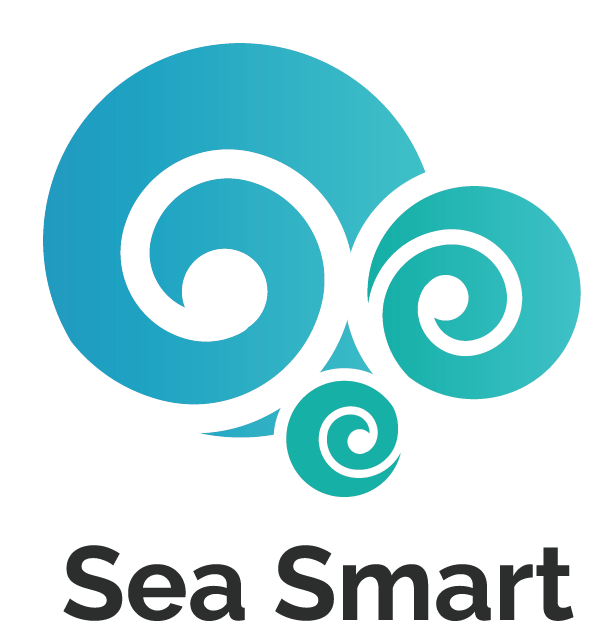Activity - Filter Feeders and Microplastics
By Brittany Ahmann, Environmental Educator, Sea Smart
The learning concepts of this activity are best suited for elementary age children, but the activity itself can be fun for any young child!
Did you know?
The ocean is home to an array of incredible species that all feed in different ways. Filter feeders are animals that filter or strain food from the water column (1). Sea cucumbers, anemones, and basking sharks are just a few species in our local B.C. waters that are considered filter feeders. However, the way animals have adapted to filter feed varies. Try this fun activity with your family to teach about different methods of filter feeding and the threat that plastics pose to them.
Pink, blue and purple beads represent plankton while the yellow and gold beads represent microplastics.The ocean is home to an array of incredible species that all feed in different ways. Filter feeders are animals that filter or strain food from the water column (1). Sea cucumbers, anemones, and basking sharks are just a few species in our local B.C. waters that are considered filter feeders. However, the way animals have adapted to filter feed varies. Try this fun activity with your family to teach about different methods of filter feeding and the threat that plastics pose to them.
What will you need?
Lots of beads or bits of paper. Can be different shapes, sizes, and colours. Choose one colour to be your microplastic. There should be 5x more of the other beads than of the microplastic beads
1 big bowl
1 smaller bowl per child
Different kitchen utensils (straining spoons in various sizes, turkey baster or eye dropper depending on bead size)
Tape
Step by step instructions:
1. Set up the activity by pouring all the beads, including the ones you have assigned as microplastics, mixed together in the big bowl. Keep it a secret that some of the beads are ‘microplastics’ and not ‘plankton’. To make it more challenging you could even put the beads in water.
2. Have the child choose their feeding method/animal they want to use. Basking sharks use their gill rakers to filter/strain plankton from the water column, similar to the straining spoon. Sea cucumbers are a specialized type of filter feeder called a deposit feeder. They filter through sediment/the ocean floor to find food by essentially sucking up the sediment. This is similar to the turkey baster. Anemones use their sticky, stinging tentacles to catch food. For this one wrap a piece of tape around each finger. *Note this method would not work in water.
3. Use the chosen filter feeding method to catch the plankton and transfer the beads to the smaller bowl.
4. After have them count out how many of the microplastic assigned beads were caught.
Why this matters:
Basking SharkFilter feeders are generally non-selective in their feeding as they eat whatever they catch. This poses a huge challenge for these animals in the face of plastic pollution. A study done in 2002 found that in some areas of the Pacific Ocean there was a ratio of 1:5 for microplastics:plankton (2)! Have a discussion with your family about ways you can reduce your impact on plastic pollution. Participating in beach clean ups, and refusing to use single use plastics are simple actions you can take. However, reducing microplastics might not be as obvious.
Some of the leading contributors of microplastics come from washing our clothes and driving cars. Many clothing products today, such as fleece, polyester, and nylon, are made out of synthetic, plastic based, fibers. When we wash our clothes in the washing machine the clothing will shed those tiny fibers releasing them into our waterways (3). Driving our cars may be a perplexing contributor, but as you drive your tires wear down over time. Researchers found that the dust particles produced by this are a significant contributor to microplastics in the environment (4).
Liked this experiment?
Show us your experiments on social media and check out our other marine biology activities to do during school closures!
Bibliography
1. The editors of Encyclopaedia Britannica. (2008). Filter Feeding. Encyclopaedia Britannica. https://www.britannica.com/science/filter-feeding
2. Moore, C. J., Moore, Shelly, L., Leecaster, M. K., & Weisberg, S. B. (2002). A comparison of Plastic and Plankton in the North Pacific Gyre. Marine Pollution Bulletin, 42(12), 1297–1300. https://doi.org/10.1016/S0025-326X(01)00114-X
3. Carney Almroth, B. M., Astrom, L., Roslund, S., & et al. (2018). Quantifying shedding of synthetic fibers from textiles; a source of microplastics released into the environment. Environ Sci Pollut Res, 25, 1191–1199. https://doi.org/https://doi.org/10.1007/s11356-017-0528-7
4. Kole, P. J., Lohr, A. J., Van Belleghem, F. G. A. J., & Rasgas, A. M. J. (2017). Wear and tear of tyres: A stealthy source of microplastics in the environment. Int. J. Environ. Res. Public Health, 14, 1265. https://doi.org/https://doi.org/10.3390/ijerph14101265



